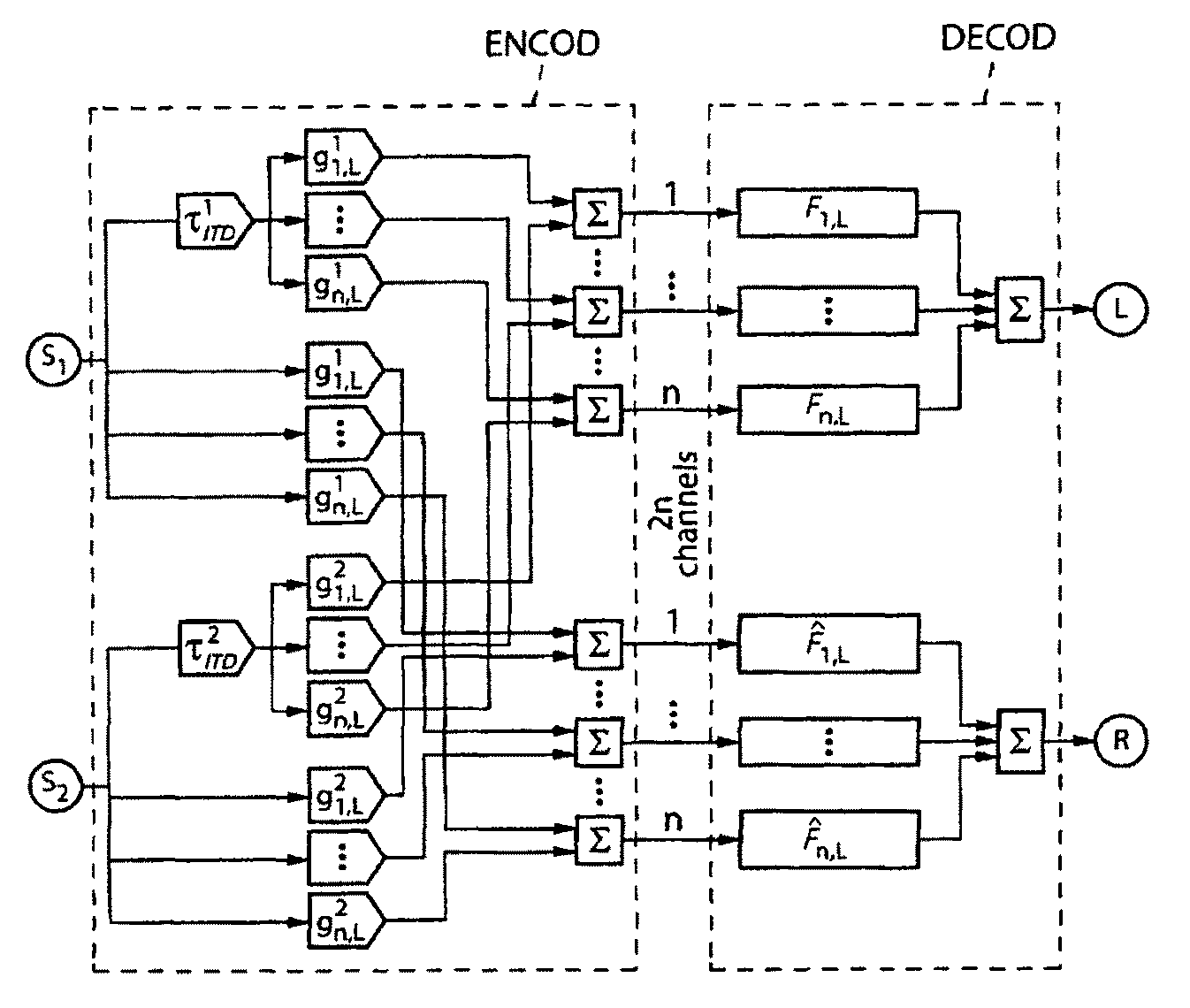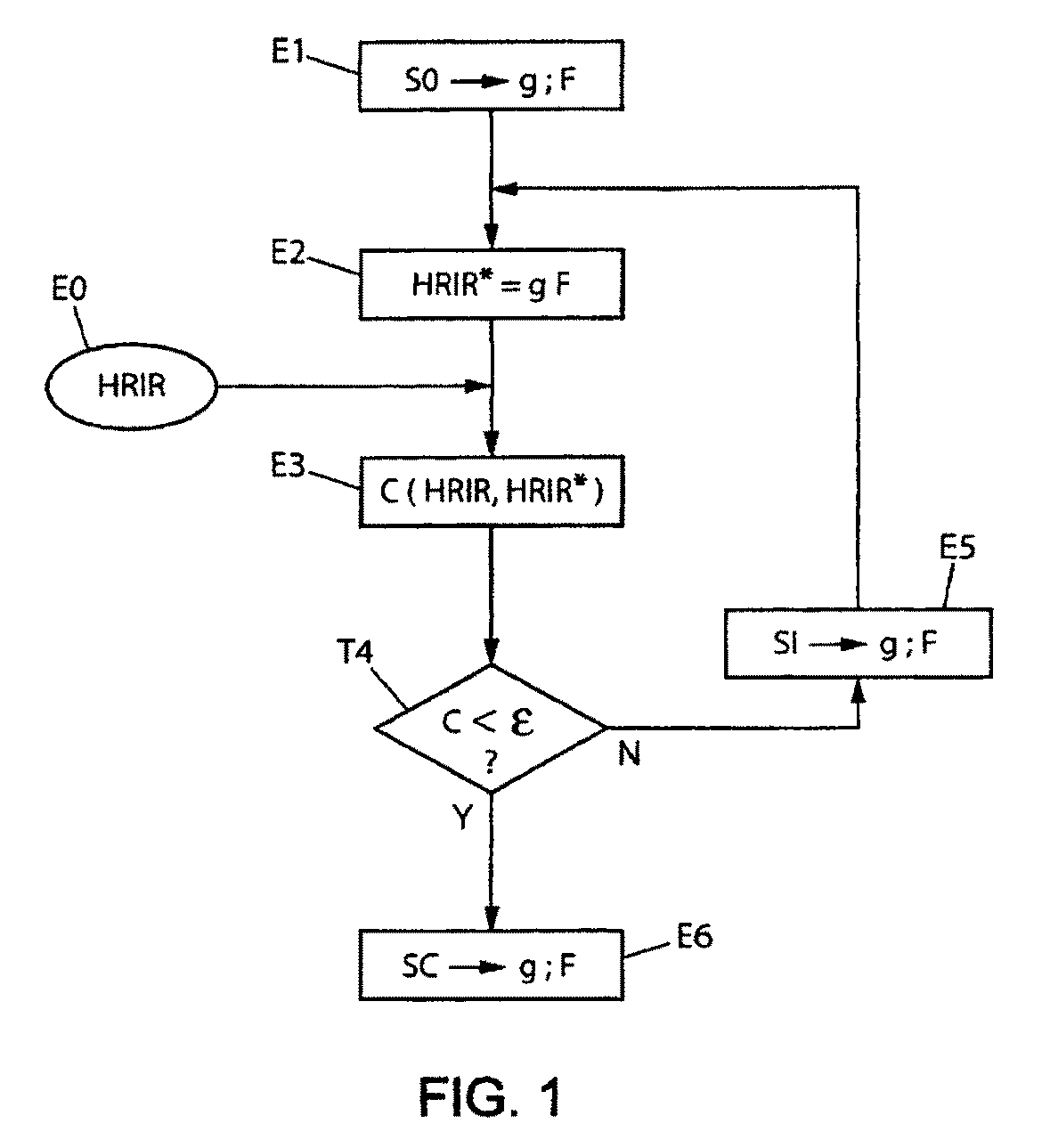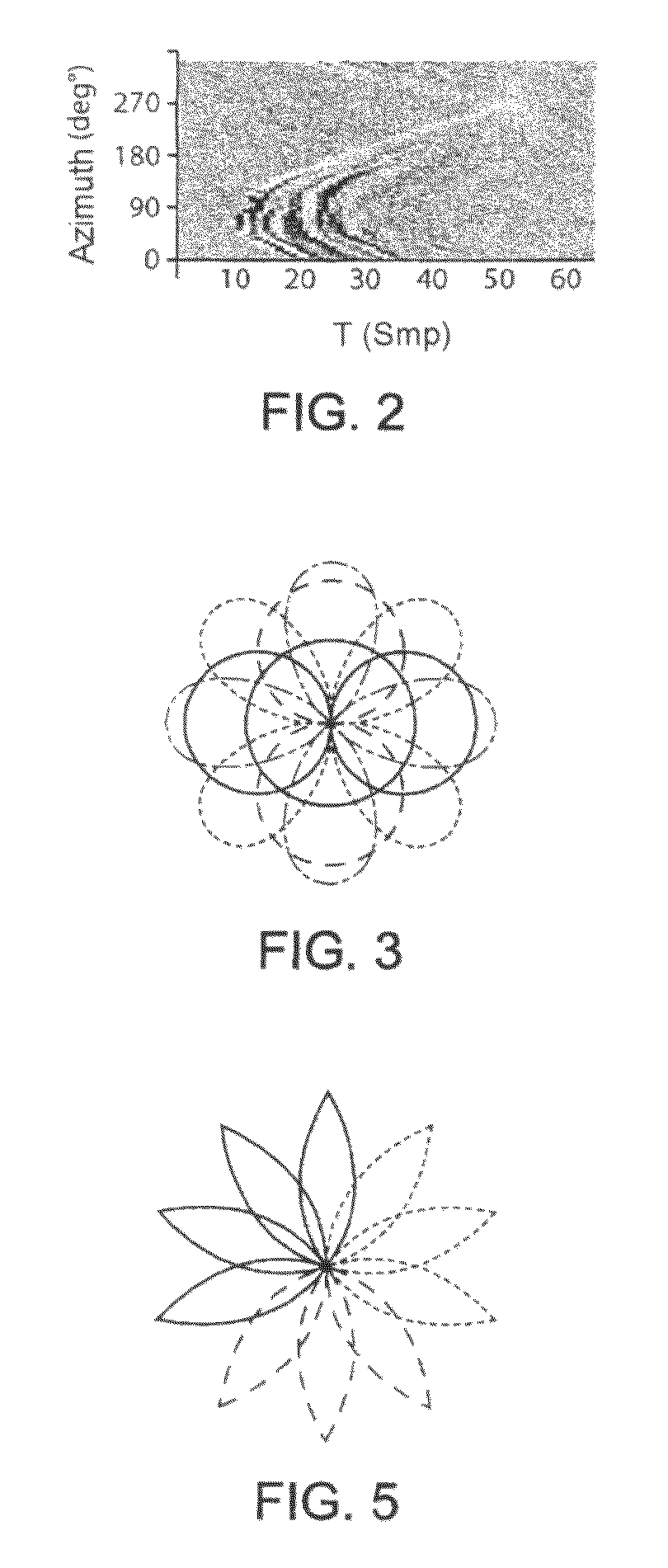Optimization of binaural sound spatialization based on multichannel encoding
a multi-channel encoding and binaural sound technology, applied in the direction of stereophonic arrangments, pseudo-stereo systems, electrical devices, etc., can solve the problems of poor sound rendition quality, low number of channels, and prior art techniques that do not make it possible to have universal spatial encoding functions, etc., to achieve good reconstruction of delay and good reconstruction of amplitude
- Summary
- Abstract
- Description
- Claims
- Application Information
AI Technical Summary
Benefits of technology
Problems solved by technology
Method used
Image
Examples
first embodiment
[0110]Described hereinafter is an exemplary optimization of the filters for decoding a content arising from a spatial encoding by spherical harmonic functions in an ambiophonic context of high order (or “high order ambisonic”), for reproduction to binaural. This is a sensitive case since if sources have been recorded or encoded in an ambiophonic context, the interaural delays must being complied with in the processing when decoding, by applying the decoding filters.
[0111]In the implementation of the invention set forth hereinafter by way of example, we have chosen to limit ourselves to the case of two dimensions and thus seek to provide optimized filters so as to decode an ambiophonic content to order 2 (five ambiophonic channels) for binaural listening on a headset with earpieces.
[0112]For the embodiment of the first step a) of the general method described above (reference E0 of FIG. 1), use is made of a suite of HRIR functions measured for the left ear in a deadened chamber and fo...
second embodiment
[0124]Described hereinafter is an exemplary optimization of the decoding filters for spatial functions arising from intensity panning (“pan pot”) laws consisting, in simple terms, of mixing rules.
[0125]Panning laws are commonly employed by sound technicians to produce audio contents, in particular multichannel contents in so-called “surround” formats which are used in sound reproduction 5.1, 6.1, or the like. In this second embodiment, one seeks to calculate the filters which make it possible to reproduce a “surround” content on a headset. In this case, the encoding by panning laws is carried out by mixing a sound environment according to a “surround” format (tracks 5.1 of a digital recording for example). The filters optimized on the basis of the same panning laws then make it possible to obtain optimal binaural decoding for the desired rendition with this “surround” effect.
[0126]The present invention advantageously applies in the case where the positions of the virtual loudspeaker...
examples of implementation
[0145]The object of this part of the description is to assess the gain in terms of number of operations and memory resources necessary for the implementation of the encoding and the multichannel binaural decoding within the sense of the invention, with decoding filters which take the delay into account.
[0146]The case dealt with in the example described here is that of two spatially distinct sources to be encoded in multichannel and to be reproduced in binaural. The two implementation examples of FIGS. 8 and 9 use the symmetry properties of the HRIR functions.
[0147]The example given in FIG. 9 corresponds to the case where the encoding gains are obtained by applying the virtual loudspeaker procedure according to the second embodiment described above. FIG. 8 presents an implementation of the encoding and of the multichannel decoding when the delays are not included in the decoding filters but must be taken into account right from the encoding. It may correspond to that of the prior art...
PUM
 Login to View More
Login to View More Abstract
Description
Claims
Application Information
 Login to View More
Login to View More - R&D
- Intellectual Property
- Life Sciences
- Materials
- Tech Scout
- Unparalleled Data Quality
- Higher Quality Content
- 60% Fewer Hallucinations
Browse by: Latest US Patents, China's latest patents, Technical Efficacy Thesaurus, Application Domain, Technology Topic, Popular Technical Reports.
© 2025 PatSnap. All rights reserved.Legal|Privacy policy|Modern Slavery Act Transparency Statement|Sitemap|About US| Contact US: help@patsnap.com



